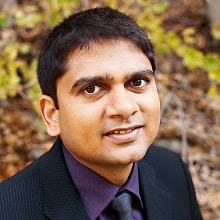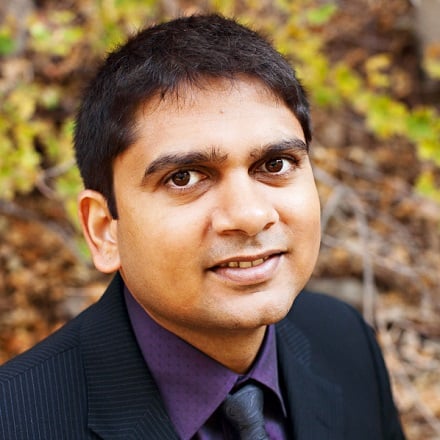Inside Angle
From 3M Health Information Systems
Technology and natural disasters: Surviving the floods in Chennai
Exactly one month ago, I came face to face with the fury of El Niño in Chennai, a sprawling city in India of more than 7 million people. The storms and the floods of December 1 left 1.8 million people displaced from their homes and about 400 dead. I narrowly escaped the floods, thanks to my mobile device and the thoughtfulness of strangers. Now, I have a chance to reflect on how technology has made crowdsourced disaster relief possible, and what lessons healthcare can learn from this.
I was traveling to Chennai on December 1 for my return flight to the US on December 3. I was looking forward to meeting my friends whom I haven’t seen in a decade, and they had promised to show me the culinary delights that the metropolis had to offer. The city had been hit by two tropical storms in November 2015, leaving the land waterlogged and all the reservoirs in the city almost brimming over. Another storm was forecast for December 1, and everyone expected it to be yet another storm which will leave the low lying areas waterlogged, without affecting the rest of the city. Looking back, foresight sometimes seems to be in vain like the best laid plans of mice and men. El Niño had other plans, with the storms bringing down the highest 24-hour rainfall that the city has seen in more than 100 years.
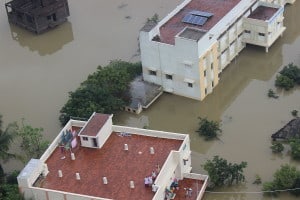
I am not a big user of social media. But at the chiding of my friends, I had installed a few apps on my cellphones – Twitter and Telegram. They used Whatsapp heavily as well, though I hadn’t installed it myself. I was in constant contact with my friends to find a place and time for dinner, since some of them were on call at their hospitals, and it was hard to coordinate everyone’s schedule as it always is. Nevertheless, the constant social media chatter turned out to be the helpline that guided me to avoid the floods. We soon figured that the rains would be worse than expected, and took a rain check (literally) on our dinner plans. Soon after, my friends started providing me weather and road updates to help me avoid the flooded roads. When we were about one hour away from the southern limits of the city, we were diverted by the police to take a detour to the western side of the city since a lake had breached its banks and had flooded the highway a few miles ahead of us. What would otherwise be a two-hour detour turned to be a six-hour detour due to roads being eroded by heavy rains and traffic. My friends told me to avoid certain roads our driver was considering because those roads were flooded and cut off.
When we finally reached the western highway of the city, we were again turned away by the police there, who only permitted buses to enter and prohibited cars due to rising flood levels on the western highway. I have been stranded several times in unfamiliar cities due to bad weather, but this is the first time I couldn’t find a hotel room for the night after trying nearly a dozen of them. Finally, we found a room for the night in a remote location with the help of my family and friends who were helping me via phone and social media.
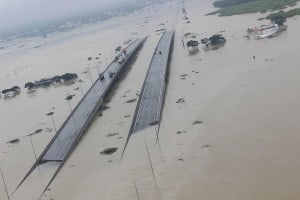
The next morning, I found that the city was hit by a large natural disaster:
- Three major rivers that run east to the sea overflew their banks and flooded areas nearby. Surplus water was let off from reservoirs to protect their banks, which in turn worsened the floods in the rivers.
- My friend who was on call had performed several Cesarean sections overnight, and she was at the hospital for over 36 hours since other doctors couldn’t reach the hospital to relieve her. Her hospital had lost electricity and backup power, and they were doing all they could to support the patients.
- Some hospitals were manually ventilating the patients due to power failures (both the electric supply and backup generators) and had to either evacuate or move their patients to higher floors.
- The Hindu, a large national newspaper that has been published since 1878, was not published for the first time on December 2.
- Most trains were cancelled since the tracks and stations were flooded.
- The airport was closed since the terminals and runways were flooded.
- All major highways to the city – on the South, West, and to some extent, the north were cut off from the rest of the city. Many roads were eroded and some bridges failed.
- The city was physically cut off from the rest of the world. Power supply was cut off in many areas. Internet access, telephone and cellular services were cut off in many areas. Some areas were under 10 to 15 feet of flood water.
- Many people had turned off their cellphones to conserve the last bit of battery power they had to use for emergencies. Most of my friends who were helping each other through social media were slowly going offline as their batteries ran out.
However, I was reassured of the city’s resilience due to large coordinated as well as crowdsourced disaster relief efforts:
- #ChennaiRains and #ChennaiFloods on Twitter were trending with people needing rescue, women in labor needing rescue and transportation to hospitals, SOS messages, as well as people offering help, doctors willing to brave the floods to drive to people needing help, and people offering accommodation with food and internet access for strangers and their pets.
- The National Disaster Relief Force and the military had been pressed into service as soon as the state government realized that the floods were too much for them to handle. The army, navy and air force responded with boats, helicopters, and ground forces, and they helped with airlifts and food drops by the same evening.
- Many concerned residents of the city, including a couple of film stars, loaded up their SUVs with food and blankets, and were announcing their location to social media. They were driving to people who responded on Twitter and Whatsapp, and were delivering food, water and blankets to people in need.
- Many people with SUVs were driving to flooded areas, and were transporting people to relief camps.
- Many doctors and nurses were organizing ad-hoc medical relief camps, and giving away medical help as well as medicines. They self-organized through social media, and people learned about these camps through social media as well. Many non-medical volunteers helped by finding space for the camps, transporting patients to and from these medical camps, managing the crowds, and transporting people to temporary shelters and hospitals.
- Many people continued to provide flood and road condition updates for the few days, as well as phone numbers and locations of temporary shelters, doctors and medical facilities who were volunteering to help.
- The military, the police, the public and medical professionals worked very closely with each other, and communicated with each other through social media.
- Fever, diarrheal diseases and foot infections were the most reported illnesses. Medical professionals were looking out for cases of leptospirosis, dengue or other waterborne illnesses which might emerge later on.
- Overall, the disaster relief was well coordinated, and some military personnel were quoted as saying that this was the first natural disaster where they saw more volunteers than victims.
- The relief efforts are nicely summed by in this video by several volunteers from Chennai.
I changed my flights to depart from Bengaluru instead of Chennai. After several detours, I finally made it to Bengaluru safely with the help of technology and tech-savvy strangers.I did the smallest bit I could by tweeting weather and road updates on the highway from Chennai to Bengaluru, which seemed to help some people who tried to take the same road. After returning home, I have been involved in some relief efforts by a group of medical informatics professionals through the use of technology. We are being helped by some other volunteers who set up an instance of Sahana Eden, an open source disaster relief management software that was created in the aftermath of the Indian Ocean tsunami in 2004.
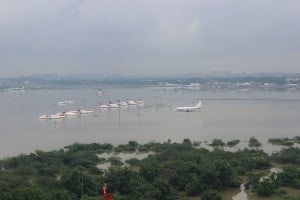
As I continue to help and coordinate the relief efforts, I learned a few lessons on what trained medical professionals can do. Many of these depend on ubiquitous technology such as cellphones with GPS and internet access. A handful of professionals who coordinate medical relief need to be trained in the use of disaster management, medical relief management and family reunification software, such as Sahana Eden and Sahana Vesuvius. A team that can immediately install, test, validate, train and provide an instance of such software for use is also necessary. On the ground, we need cellular phones or tablet computers along with backup power supply (batteries and portable solar panels).
In each type of natural disaster, we need to prepare for the appropriate relief efforts. For example, after the Nepal Earthquake, our group of medical informatics professionals distributed information pamphlets about how to prevent or treat crush injuries and rhabdomyolysis, in addition to collecting and shipping medical supplies. After Chennai floods, we saw many volunteers trying to prevent or treat waterborne and vector-borne diseases.
Overall, the biggest lesson I have learned by narrowly escaping a 100-year flood and helping to coordinate the relief efforts is that people have a natural tendency to help. Until now, they did not have the means to go out and help. Today, with the ubiquity of cellular internet access and the convenience of social media, they are out in droves to fend off any disaster that Mother Nature can throw at us. In recent times, the youth around the world have been blamed for wasting their time on social media. This past month, they proved that they can put their information sharing and gathering skills to good use, and they can back it up with physically help as well. I must note that other smaller cities such as Cuddalore were equally affected, but the volunteer efforts were delayed there possibly due to lower penetration of social media.
The question left for professionals such as us is “How can we harness such tremendous crowdsourced human will and effort to answer the needs of millions of people under time and resource constraints?” This is the question that I’m now trying to answer as a medical informatics and a medical professional. I hope my lessons and my questions are yours as well and that we find some answers together in the new year.
Senthil K. Nachimuthu, MD, PhD, Medical Informaticist with 3M Health Information Systems’ Healthcare Data Dictionary (HDD) team.
All photos provided by the Indian Air Force.

